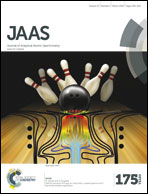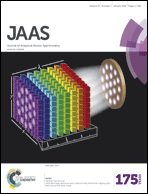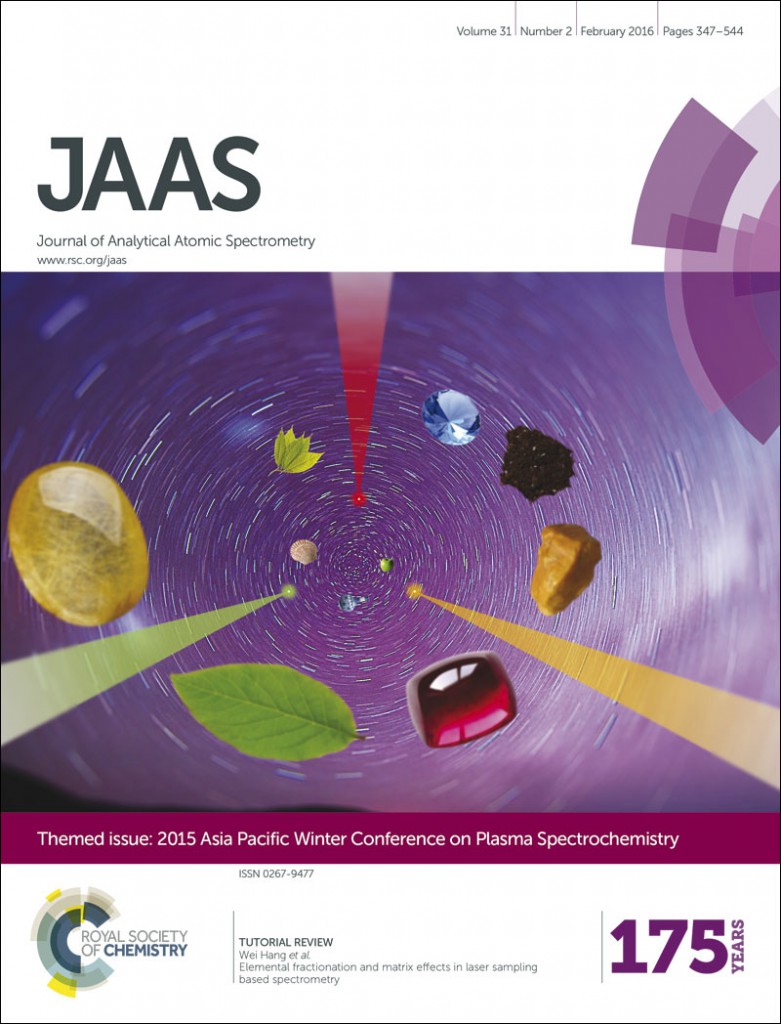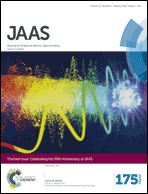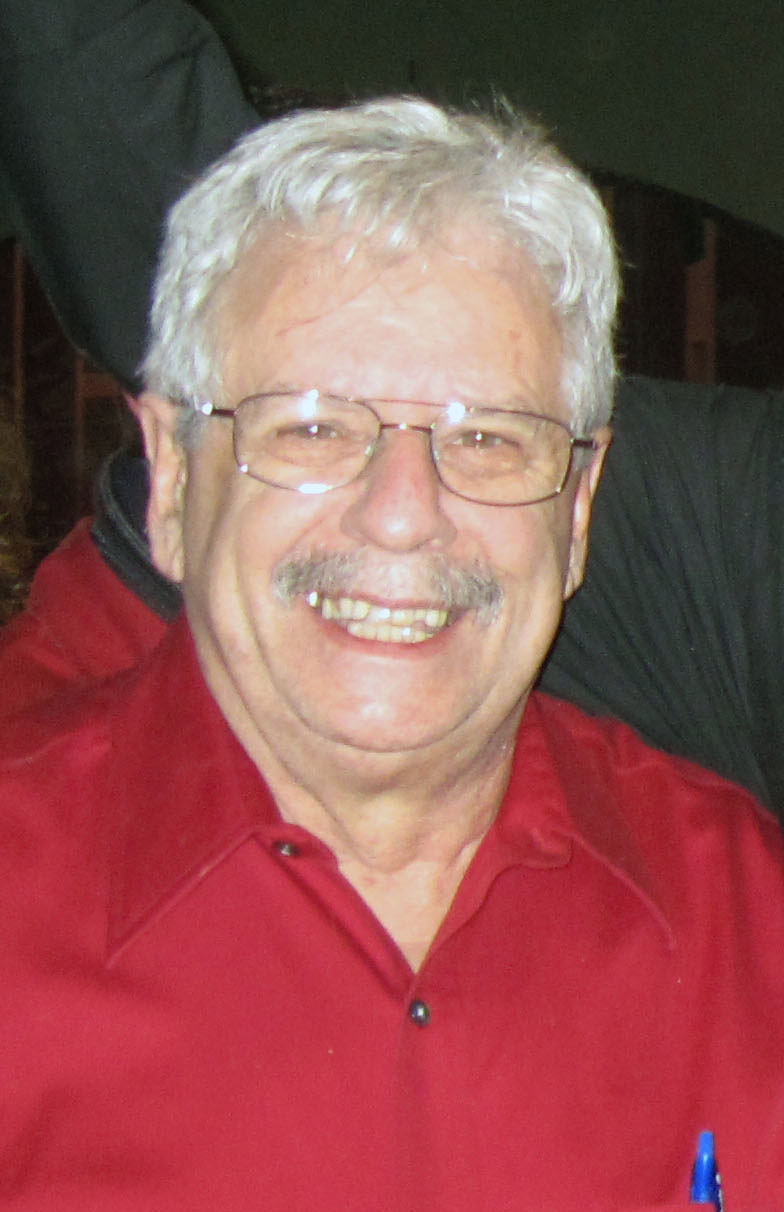During the months January – March 2016, the most downloaded JAAS articles were:
N. J. Evans, B. I. A. McInnes, B. McDonald, M. Danišík, T. Becker, P. Vermeesch, M. Shelley, E. Marillo-Sialer and D. B. Patterson
J. Anal. At. Spectrom., 2015, 30, 1636-1645
DOI: 10.1039/C5JA00085H, Paper
Owen T. Butler, Warren R. L. Cairns, Jennifer M. Cook and Christine M. Davidson
J. Anal. At. Spectrom., 2016, 31, 35-89
M. Wacker and A. Seubert
J. Anal. At. Spectrom., 2014, 29, 707-714
DOI: 10.1039/C3JA50358E, Paper
David P. Bishop, David Clases, Fred Fryer, Elizabeth Williams, Simon Wilkins, Dominic J. Hare, Nerida Cole, Uwe Karst and Philip A. Doble
J. Anal. At. Spectrom., 2016, 31, 197-202
DOI: 10.1039/C5JA00293A, Paper
Margaret West, Andrew T. Ellis, Philip J. Potts, Christina Streli, Christine Vanhoof and Peter Wobrauschek
J. Anal. At. Spectrom., 2015, 30, 1839-1889
DOI: 10.1039/C5JA90033F, Atomic Spectrometry Update
Phillip. L. Manning, Nicholas P. Edwards, Roy A. Wogelius, Uwe Bergmann, Holly E. Barden, Peter L. Larson, Daniela Schwarz-Wings, Victoria M. Egerton, Dimosthenis Sokaras, Roberto A. Mori and William I. Sellers
J. Anal. At. Spectrom., 2013, 28, 1024-1030
DOI: 10.1039/C3JA50077B, Paper
S. Wagner, S. Legros, K. Loeschner, J. Liu, J. Navratilova, R. Grombe, T. P. J. Linsinger, E. H. Larsen, F. von der Kammer and T. Hofmann
J. Anal. At. Spectrom., 2015, 30, 1286-1296
DOI: 10.1039/C4JA00471J, Paper
Owen T. Butler, Warren R. L. Cairns, Jennifer M. Cook and Christine M. Davidson
J. Anal. At. Spectrom., 2014, 29, 17-50
DOI: 10.1039/C3JA90068A, Atomic Spectrometry Update
Claudia Cascio, Otmar Geiss, Fabio Franchini, Isaac Ojea-Jimenez, François Rossi, Douglas Gilliland and Luigi Calzolai
J. Anal. At. Spectrom., 2015, 30, 1255-1265
DOI: 10.1039/C4JA00410H, Paper
Comments Off on Top 10 most accessed JAAS articles between January – March 2016













